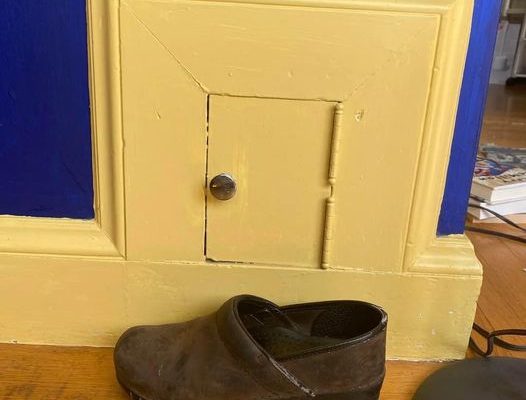The Original Question:
A user on Reddit inquired:
“I live in a house built in 1916. On the other side of this wall is what my landlord referred to as the ‘sewing room.’ This house has about eight bedrooms and was definitely tricked out for its time. I can enter the sewing room and have searched all around the floor where I believe a door would open, but I can’t find the backside of this tiny door! It’s painted over and feels very secure, almost locked. This house has a complex laundry chute system, but this seems too small to be part of it. The room clearly was built as a bedroom, with a bathroom and closet, neither of which are near this bizarre little architectural feature.”
Some Answers and Comments:
Curious about what this tiny door might be for? Share your thoughts in the comments on our Facebook post!
Exploring Historic Architecture: The Spruce Hill Victorian Masterpiece
In the historic Spruce Hill neighborhood of Philadelphia, Pennsylvania, stands a testament to timeless elegance and architectural ingenuity: a Victorian masterpiece designed by the renowned architect George Hewitt. This majestic residence, rich in history and adorned with intricate details, embodies Victorian charm and remains a symbol of the neighborhood’s enduring allure.
George Hewitt, a prominent figure in 19th-century American architecture, significantly influenced Philadelphia’s landscape with his distinctively designed homes. His eye for detail and commitment to craftsmanship are evident in this particular gem in Spruce Hill. Constructed during the height of the Victorian era, this residence showcases the opulence and sophistication of its time.
From the moment one sees the exterior façade, it’s clear that this home is a work of art. Elaborate trimmings, ornate gables, and a meticulously crafted porch invite visitors to step back in time and experience the grandeur of the Victorian era. The intricate woodwork, often referred to as “gingerbread,” adorns the exterior, adding whimsical charm quintessential to Victorian architecture.
Continue reading on next page…



